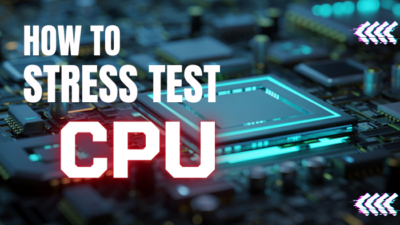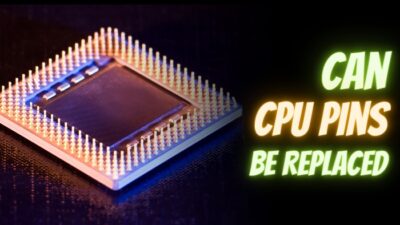Whenever one element limits the capability of a stronger component, this is referred to as a bottleneck. The same is true for the CPU, which can also potentially cause a bottleneck in a system.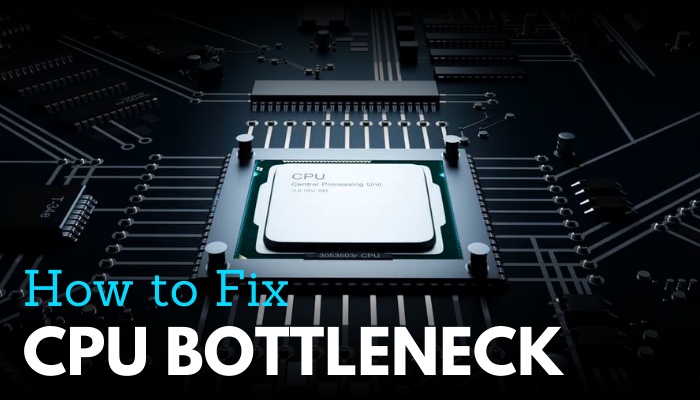
So, in this article, I’ll show you a few tried-and-true methods for resolving your CPU bottleneck and the reasons behind it.
Let’s get started.
How to Fix CPU Bottleneck
To fix the CPU bottleneck, simply increase the game resolution to its highest setting, close unnecessary background apps, and overclock your system. Lowering CPU-related settings and upgrading your CPU to a higher tier can also solve CPU bottlenecks.
CPU bottleneck is bad, but the solution is pretty simple. Just look at the proven and tested procedures in the section below.
Here are the methods to fix the CPU bottleneck issue:
1. Improve the Resolution of Games
Increasing the display resolution of your games is among the finest ways to shift the burden off from the Processor and onto the Graphics card. This is normally possible through the game’s graphic or video options.
For this demonstration, I choose the popular multiplayer game COD Warzone. In the section below, I’ll guide you through the steps of increasing the resolution of the COD Warzone.
Follow the below procedure for increasing game resolution:
- Run the COD Warzone from your computer.
- Go to Options from the main menu.
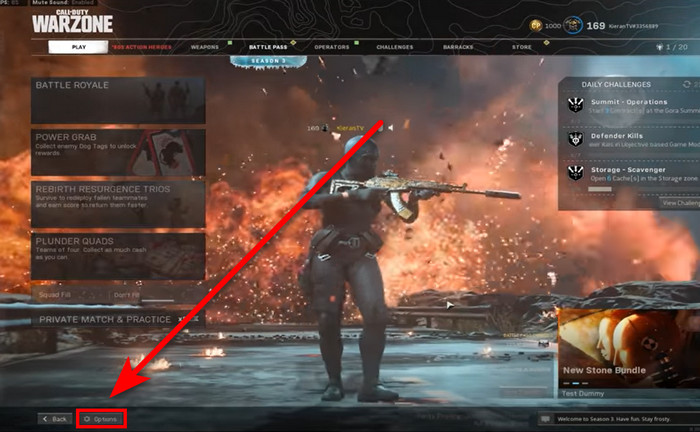
- Select the Graphic tab.
- Choose Display Resolutions and increase it from the current resolution.
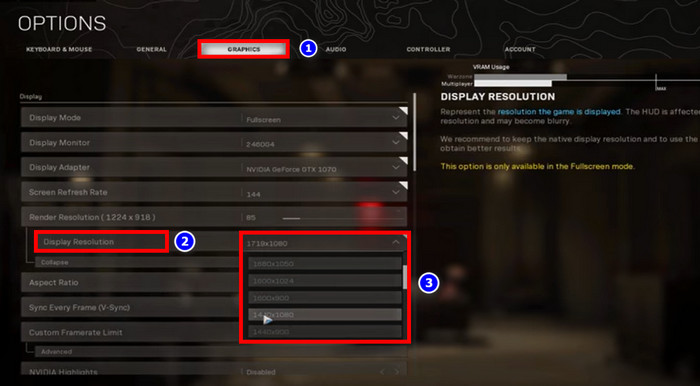
When you increase the resolution of your game, it increases the number of pixels generated by your graphics card. Although you transfer more load from the GPU to the CPU, your processor will no longer bottleneck, and you will experience smoother gaming.
2. Clear Background Applications
Background programs are among the most common causes of a Processor bottleneck. During an inactive state, a CPU consumes between 3% and 6% of its power.
It consumes 15% to 45% when running less graphically demanding games, and up to 80% when running more graphically demanding games.
When a large piece of background software consumes 20% to 30% of the processor, there is no headroom for the processor to run other applications. As a result, the CPU can start bottlenecking.
So, removing superfluous background programs will help to alleviate the CPU bottlenecking issue.
The following is the clear background application procedure:
- Type Task Manager in the Start menu to open it.
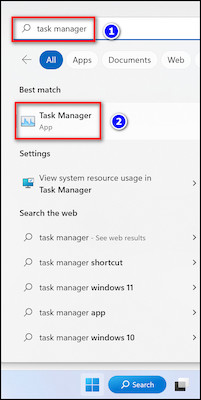
- Click on the CPU option under the Processes tab.
- Find which program uses most of the CPU.
- Select your preferred program and click End task to close the program.
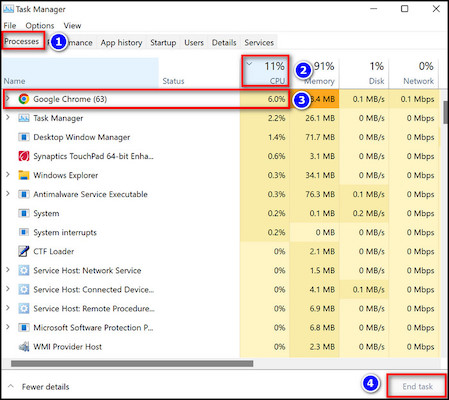
After closing any background programs, test your CPU performance by launching a game to see whether it is bottlenecking. If it keeps bottlenecking, proceed to the next method.
3. Overclock Your Processor
Overclocking your Processor can assist to improve your computer’s performance and increase game FPS, while also minimizing bottlenecking problems.
The only issue is that not every CPU can be overclocked. Only K series Intel processors can be overclocked.
On the other hand, if you have any type of AMD processor, it can be overclocked because AMD processors are all unlocked out of the box.
The majority of users find the overclocking process complex. As a result, you must take caution when it comes to CPU overclocking, as it can reduce processor longevity. The BIOS menu allows you to overclock your CPU. Simply follow the steps outlined below.
Here’s how to overclock your processor:
- Press F2 or DEL button to enter BIOS.
- Go to the CPU Option and choose Overclocking.
Note: These settings may differ depending on the motherboard.
- Increase your CPU ratio.
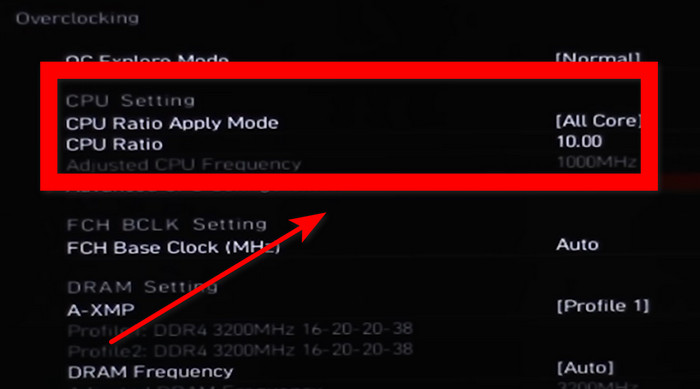
Note: Increase the ratio till your computer does not crash and is operating normally.
Check your processor performance after overclocking it. If the CPU becomes bottlenecked again, proceed to the next procedure.
4. Lower CPU Based Game Settings
The other method for dealing with CPU bottlenecking problems is through in-game options, particularly those settings that use the CPU resource more.
These game settings involve reducing the compactness of inhabitants, physics settings, environment, and draw range, although these all vary depending on the game.
If lowering the graphics settings does not reduce the CPU bottleneck, try limiting the game’s frame rate. Because some games require a faster frame rate than your processor can manage.
5. Upgrade Your CPU
If the above-suggested approaches do not resolve the CPU bottlenecking issue, you may need to upgrade your CPU. This is critical because if your GPU is overpowered in comparison to your processor, your processor will bottleneck.
Purchasing a strong CPU will thus eliminate the bottleneck, resulting in smoother performance from your work and gaming.
What is CPU Bottleneck?
When a CPU limits the capability of an even stronger component, such as a GPU, it can cause an imbalance between the parts, which is known as a CPU bottleneck. A bottleneck can also occur when the information transmission rate is limited solely by the CPU.
Assume, you have a Core i3 10100 processor and an RTX 3080 graphics card. The GPU is significantly more powerful than the CPU in this case.
As a result, the CPU will bottleneck with the GPU, reducing system performance.
In theory, an RTX 3080 should have no trouble running enhanced visual games. Unfortunately, a processor bottleneck emerges because the i3-10100 processor is incapable of keeping up with the computational efficiency of the video card.
For this reason, users will not receive ideal performance from their games or activities.
What are the Causes of a CPU Bottleneck?
A CPU bottleneck might occur due to an overheated processor, adware, glitches, or demanding graphics requirements. Overheating CPUs automatically reduces their speed in case of any damage probability, and this lower frequency will bottleneck the system.
Many types of malware or ransomware boost the system’s background processes. CPU usage will rise as a result of this additional background process.
When CPU usage increases, the processor has less headroom to handle additional programs. Therefore, the CPU can become a bottleneck in the system.
Furthermore, certain modern games, like COD: MW2, Valorant, and Fortnite, have CPU-intensive visual settings. As a result, the CPU must do the majority of the rendering, which causes it to slow down.
Due to the lower frequency, the CPU can handle less data than the GPU, causing a bottleneck in the system.
FAQs
Is 100% CPU usage a bottleneck?
Yes, 100% CPU consumption can bottleneck a system because if the CPU utilization exceeds your Graphics card usage, you have a CPU bottleneck.
Does more RAM reduce bottleneck?
More RAM can help to reduce bottlenecks, but only if the RAM is the source of the problem. If you discover that RAM is the main source of the bottleneck, increasing it will resolve the problem.
Can CPU bottleneck damage your PC?
A CPU bottleneck can harm your system by forcing other devices to make allowances for the slow processor.
Is 8 GB RAM a bottleneck?
8 GB of RAM is not a bottleneck because it is good. For most recent games, though, 16 GB is soon would become the baseline.
Conclusion
CPU bottlenecking is a frustrating process for users since it restricts game performance and user usability.
So, in this article, I demonstrated a few efficient strategies for reducing CPU bottlenecking as well as its causes of it.
If you have any comments, leave them in the section below.

